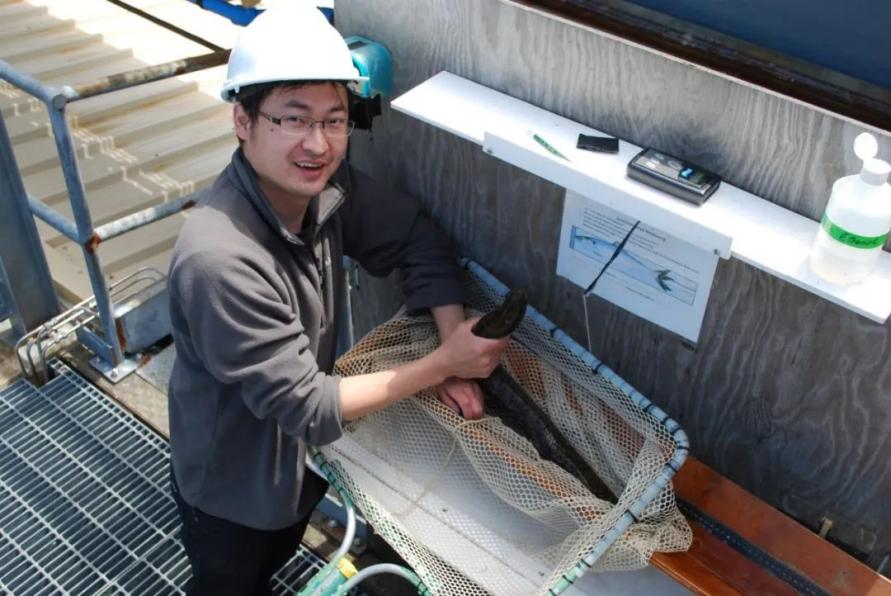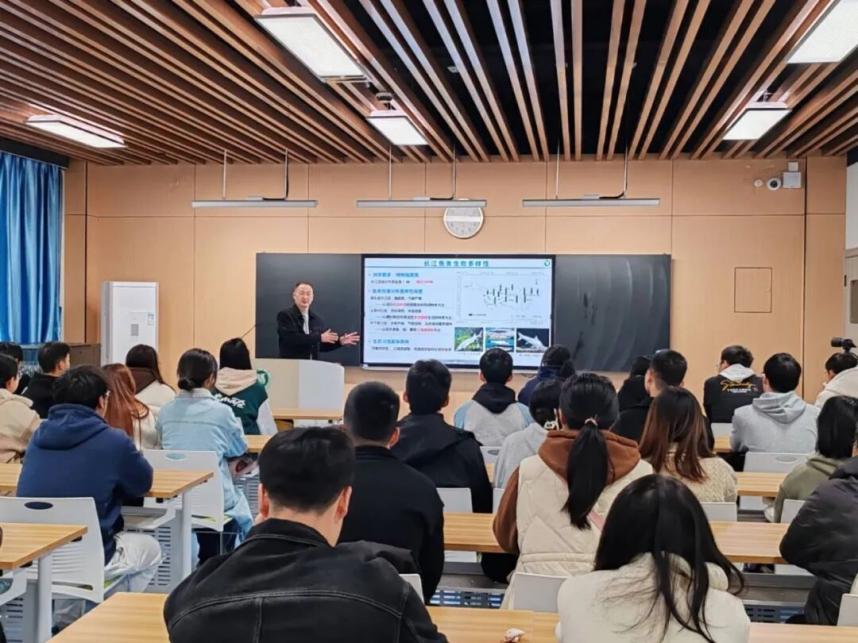Helping fish navigate dams: one engineer's mission to restore the Yangtze River ecosystem

Photo shows Shi Xiaotao, president of the College of Hydraulic and Environmental Engineering at China Three Gorges University, doing the fieldwork.
"When it comes to the fish of the Yangtze River, I'm likely the most water-savvy among fish experts, and the most fish-savvy among hydraulic engineers," said Shi Xiaotao, president of the College of Hydraulic and Environmental Engineering at China Three Gorges University.
With a background that bridges aquatic biology and hydraulic engineering, Shi has spent the past 16 years applying his interdisciplinary expertise to help millions of fish in the Yangtze River overcome dam barriers, enabling migration, spawning, and population recovery.
As China's longest river, the Yangtze supports a rich diversity of fish species, including the critically endangered Chinese sturgeon, which relies on upstream migration to spawn. To protect and replenish its population, authorities in cities such as Yichang and Jingzhou, central China's Hubei province, organize annual release programs for artificially bred Chinese sturgeon. This April alone, more than 220,000 juvenile sturgeons were returned to the river.
Beyond release programs, the development of fish passages has become a growing priority. China's revised 2002 Water Law stipulates that dam developers build facilities to accommodate migratory fish, vessels, and timber passage, or implement approved alternatives. These measures, including protections during dam construction and reservoir impoundment, must be fully funded by the developers.

Shi Xiaotao releases a Chinese sturgeon.
However, many companies lack the technical knowledge to implement effective fishways. To bridge this gap, Shi turned construction sites into field laboratories. He and his team have conducted fieldwork at dozens of hydropower stations across Xizang autonomous region, Sichuan province, Guizhou province, Xinjiang Uygur autonomous region, and Qinghai province, covering over 40,000 kilometers.
"We transport our experimental equipment by truck and build temporary field labs along the riverbanks," Shi explained. Their research revealed that migratory fish swim upstream against the current, but cannot surmount dams if the passages are too steep. As a result, most fishways are designed with baffles that create a stepwise, zigzag flow, reducing water pressure and allowing fish to ascend more gradually.
"Different rivers host different species with varying swimming abilities, and factors like water temperature, flow speed, and eddy currents all differ. So we collect data scientifically, capture local fish species, and conduct experiments in facilities that simulate natural water flows. We're constantly optimizing variables like height and width for each section," he explained.

Shi Xiaotao delivers a lecture as part of his signature course Innovative Practices for Yangtze River Conservation.
Shi's team is also integrating digital technology into fishway design. But despite these advancements, they still spend at least three months a year conducting field experiments. "Nature is ever-changing. Digital models can support our work, but they cannot replace on-site experiments," Shi noted.
In early September, Shi taught a class at a fishway monitoring station near the Three Gorges Dam, the world's largest hydropower project, located in Hubei province. The lecture was part of his widely attended elective, Innovative Practices for Yangtze River Conservation, which attracts over 100 students each semester from disciplines including hydraulic engineering, environmental engineering, and law.
"Field-based teaching is central to this course," Shi said. "I want students to connect with nature, learn about species such as the Yangtze finless porpoise, and grow into stewards of river conservation."
Beyond teaching, Shi has organized volunteer programs and runs a science communication social media account dedicated to Yangtze River conservation. His team works to educate the public, raising awareness through videos, campaigns, and community engagement.
"Since the fishing ban was introduced, the number of Yangtze finless porpoises in the Yichang section has increased, and locals have grown fond of them. But some still feed them or fly drones nearby, which disturbs their habitat. Through our outreach efforts, these behaviors have decreased significantly," Shi said.
Popular videos on his platform, such as How Fish Cross Dams and Major Threats to Aquatic Life in the Yangtze River, present ecological science in accessible, engaging formats, building public support for conservation efforts.
"I hope our work inspires broader public awareness and encourages more people to participate in protecting the Yangtze River's ecosystem," Shi said.
(Photos from the WeChat official account of China Three Gorges University)
Photos
Related Stories
- Father?and?son devoted over 30 years to protecting the Yunnan golden hair monkeys
- Revitalizing forest communities through science and technology in the Lesser Khingan Mountains
- Sound ecological environment generates economic benefits in E China's Jiangxi
- Man transforms barren hills into thriving Torreya grandis forests in E China's Anhui
- Alxa in N China promotes construction of ecological restoration project
- Dry-wet evolution study helps safeguard eco-security of northwest China
- A glimpse of stunning landscapes illustrating 'lucid waters and lush mountains are invaluable assets'
- Chinese premier urges efforts to write new chapter in building ecological civilization in new era
- China's role, insights in building clean, beautiful world
- Ecology in action: Beijing's Changping district home to a variety of bird species
Copyright © 2025 People's Daily Online. All Rights Reserved.









